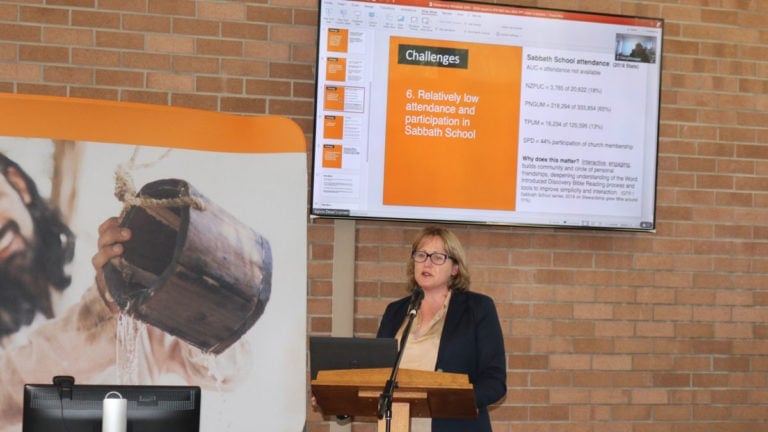
The Seventh-day Adventist Church in the South Pacific Division (SPD) has managed to weather the financial storm of COVID-19 due to the faithfulness of members, the historical wisdom of financial policies, and God’s providence, according to SPD chief financial officer Rodney Brady.
In his year-end report to the Division Executive Committee (DEC) on November 11, 2020, Brady said the financial impact on Adventist Church institutions, services, and entities was not as bleak as had been feared initially.
“We may have been quite nervous at the beginning of the year, but as we have seen the year go on, we have actually been OK during COVID,” he said.
Despite an initial drop in tithe after churches went into lockdown earlier in the year, there has been a turnaround in recent months. At the end of August, tithe across the SPD was 2.8 percent ahead of the same period last year. In the Australian Union Conference, tithe is up 8.14 percent for the year to September, with the largest increase being experienced by the Western Australian Conference (19.24 percent).
In the New Zealand Pacific Union Conference, tithe results are relatively steady, while in the Papua New Guinea Union Mission, tithe is generally exceeding the mission tithe budgets. The Trans-Pacific Union Mission experienced the biggest initial drop in tithe, but a more positive picture has emerged as the year has progressed. Many missions are now seeing positive year-to-date increases compared with the previous year. American Samoa has been a standout, up 66 percent compared to last year.
![South Pacific Division stewardship director Christina Hawkins. [Photo: Adventist Record]](https://adventistreview.org/wp-content/uploads/2022/01/christina-768x432.jpg)
The picture is not as positive, however, when it comes to offerings. According to Brady, COVID-19 appears to have accelerated a trend where offerings are decreasing.
“It appears that members have adjusted to alternative ways to return tithe, but free-will offerings have not transitioned as well,” he said. “It is the local church and General Conference that depend most on offerings. The General Conference anticipates that globally, World Mission offerings could be down this year in the range of 20 to 30 percent.”
SPD stewardship director Christina Hawkins also drew attention to offerings in her report to the DEC. “COVID has given us some visibility on data that we’ve never had before.… The [data has shown us] that our ‘eGivers’ are special people. They are planned, intentional, and incredibly generous and faithful, but there’s just very few of them,” she said.
Hawkins suggested a number of factors driving the low participation in offerings, including relatively low Sabbath School attendance, reduced systems of pastoral visitation in most local churches — a global trend — and reduced mission story or mission spotlight sections of the Sabbath worship program.
“We need to continue to build trust, increase literacy and understanding of the Adventist governance model. We need more transparent reporting and more visibility to members,” she said.
The original version of this story was posted by Adventist Record.